Basement water (condensation) issue
I got a new home since 2017 February in Ottawa Canada, however the water issue in my basement drives me crazy.
I found some water from below part of insulation(picture_one) in 2018 spring(around May), I reported this issue to the builder. When the inspector from the builder opened the insulation to try to find out the root cause of the water, We surprised found most whole basement wall were full of mold(picture_two and picture_three). The builder removed all insulation killed the mold and reinstalled the new insulation in 2018 fall. The builder did many water test outside of my basement and told me that there was no crack in my basement. The water was from condensation I need to control the humidity level in my basement.
So I put one 60pt(I assume this one is powerful enough, from the manual this model can work efficiently up to 3000 sqft) dehumidifier which from Costco in my basement and added another box fan to circulate the air. Two hydrometer were placed in basement to monitor the humidity level which keeps around 35% due to I keep dehumidifier and Fan running 7*24. However I found the same thing happened again(picture_four) when the temperature spikes above zero. I opened up a little insulation and found there are lots of frost and melt when outside is warm. I called the builder and builder said there is no warranty for condensation and there is nothing in build code .The only answer form builder for this issue is control the humidity level to 25% in winter. I think keep the humidity level to 25% is not reachable and healthy. I think my basement will mold again this spring like last year. I attached one sketch to help better understand my issue(picture_five)
what should I do to fix this issue? I did lots of research, but it seems I already did my best- keep dehumidifier running and circulate the air.
Is that true that the Ontario building code has nothing about condensation? and this issue is not a part of the warranty?
Any advice or any insight would be greatly appreciated. Thank you so much in advance.
GBA Detail Library
A collection of one thousand construction details organized by climate and house part


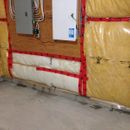
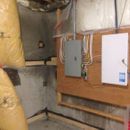
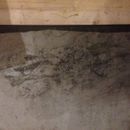
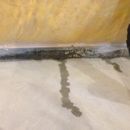
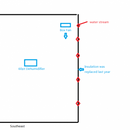







Replies
Your basement isn’t insulated correctly. Batts and poly like you have has been called “diaper” insulation since it tends to get soaked with water and then you get mold. You may be getting moisture through the concrete, which then gets trapped between the wall and the poly.
First thing to do is make sure you don’t have any water leaks in those walls. You’d want to check after a heavy rain, see if any water is finding it’s way in. If you have water problems, you need to fix those first.
Next step, replace that batt insulation and poly with rigid foam insulation. Rigid foam can be attached directly to the wall and won’t have the moisture problems of the batts with poly over them. If you’re going to be leaving the rigid foam exposed, you need to make sure you use something like dow thermax that is rated to be left exposed. If you use something else, such as EPS foam, you will need to cover it with a barrier (usually 1/2” drywall) to meet code.
I recommend you read this article:
https://www.greenbuildingadvisor.com/article/how-to-insulate-a-basement-wall
For more info.
Bill
Hi Bill,
Thanks for you prompt reply.
The builder did at least two water test in my basement I believe there is no crack or leaks in the wall.
The article you mentioned is really informative and helpful however my house still under warranty, the builder can only fix any thing break the building code, as I known all insulation in Ottawa area is built in this way and it is compliance with Ontario building code. I will think about that solution when I pass the warranty and the issue is not able to be fixed. Thanks again!
Any Ontario builders have any comments?
It seems to me odd that Ontario builders haven't learned how to insulate basement walls, in light of the fact that moisture problems like the one Daniel is talking about must be common. Continuing to do the same thing year after year, in hopes of achieving different results, is, after all, a definition of insanity.
Yes, you are right, I think this issue is common some of my neighbors have the same issue, however I raised my basement height by 1 foot which means my basement has more space above the ground level and have more chances to have this issue. however it seems the new home warranty doesn't have limitation about how much condensation is acceptable,it just says that the condensation is not a part of warranty. :(
The moisture coming through the wall doesn't have to be from a crack or leak. It's most commonly arriving by capillary draw (often from a damp footing). Putting a vapor barrier between the concrete and insulation keeps the ground moisture from getting into the insulation, but can have wintertime condensation issues at the top of the wall where the foundation is cold enough. An interior side vapor barrier can stop that, but in combination with an exterior side vapor barrier creates a moisture trap.
The solution is to put a layer of air impermeable insulation against the foundation, with sufficient R value that the average temperature at the surface of the air-impermeable insulation is above the room air's dew point in winter, and putting a semi-permeable vapor retarder (Class-II or -III) on the interior side. That interior side vapor retarder can be standard latex paint on gyprock, or a so called "smart" vapor retarder such as 2-mil nylon (Certainteed MemBrain), that becomes vapor open if moisture levels in the fiber insulation reach mold-potential layers.
The amount of air-impermeable insulation needed to mitigate the wintertime condensation issue varies by climate zone, and is spelled out in the IRC for above-grade walls in Table R702.7.1 .
https://codes.iccsafe.org/content/IRC2018/chapter-7-wall-covering
Ottawa would be climate zone 6, so for 3.5" of fiber insulation it takes a minimum of R7.5 of impermeable insulation. 2" of EPS or 1.5" of foil faced polyiso would get you there with margin. It still needs an interior side vapor retarder, but do NOT use polyethylene sheeting there.
Hi Dana,
I think you found the root cause of the condensation. Yes, I have the damp footing which is another issue I reported to the builder and they just want to caulk it without investigating the root cause. I attached some pictures to show that. For the pictures, you can see that the moisture are from the gap between the basement floor and wall. I checked the upper part of the wall behind insulation the wall is totally dry.
Thanks for your detailed solution, I need some time to digest your suggestions. but due to my home is still under warranty, is there any thing the builder should do or this issue is not covered by warranty I have to do that by myself?
Thanks!
Daniel
Since this is the second time your builder is going to have to replace the existing insulation, maybe you can use some of the information you’ve received here to persuade them to use rigid foam insulation this time? No builder wants to deal with call backs, if they see that this is a chronic problem they’re going to deal with over and over again, they may be willing to do it differently this time to avoid replacing it a third time.
Bill
>"Thanks for your detailed solution, I need some time to digest your suggestions. "
For some clarity, here's a picture of the approach mentioned taken from the gallery of the blog piece linked to in response #1:
https://s3.amazonaws.com/greenbuildingadvisor.s3.tauntoncloud.com/app/uploads/2018/08/10010204/Interior%20basement%20wall%20insulation%20detail.jpg
If the wall foam is going to be polyiso it's important to keep the cut bottom edge of the foam off the slab or it will likely wick ground moisture, becoming less effective. EPS doesn't have that issue.
If the basement isn't going to be finished, a smart vapor retarder like MemBrain may be used in lieu of the painted half inch drywall, as long as the assembly meets local fire codes regarding the foam insulation. Using rock wool rather than fiberglass offers more protection against ignition of the wall foam. Similarly, using a fire-rated polyiso (eg Dow Thermax) might also make it easier to hit fire code requirement without interior side drywall. With the drywall it passes most fire codes even without cavity insulation, but the thermal performance of the cavity insulation is still important in location as cool as Ottawa.
Regarding the above drawing: with fibrous insulation and no interior side air barrier, condensation in the rim joist may be an issue. Even more so on the cold bolt.
That's true, there is a risk if following that detail of the drawing. But most houses in zone 6 with crappy R19 stuffed up against the band joist still don't end up mold problems on the band joist (some do.)
Thanks, that is real helpful to explain the solutions. I think I will reuse the current poly as cavity insulation. I don't have plan to finish my basement.Thanks for your reminder the fire code also needs to be considered.
Hi Bill,
I think they always blame the owner that I am not using the house in correct way, they say I should control the humidity level to 25% to prevent the condensation. If they followed the building code and I am not able to point out what they did wrong, I don't think they will fix anything.
The mold is not acceptable but it's not easy to find out, I need to open up the insulation and the mold develops very slow, when I see that mold again the warranty might be expired. That's why I put dehumidifier and box fan to try my best to control the humidity level, if just some water drain behind insulation is fine without mold. when I decide to finish the basement I can change the rigid foam by myself.
Do you think If I control the humidity to 35% in basement the mold is not able to be grown? Due to the mold is behind the clear poly I am not sure control the humidity in another side is useful. Thanks
Daniel
If that moisture is coming through the concrete, then your humidifier might be overwhelmed and unable to accomplish much.
If the builders won’t insulate a different way, see if you can get them to make a payment to you for the materials and time they’d otherwise put into the repair. Offer to sign a waiver for the basement insulation (make sure it’s linited to ONLY waiving the basement insulation) so that they don’t have to cover it under warranty again. Use the money to hire someone to put in the rigid foam, or do it yourself (it’s not very difficult to do if you have physical access to all the walls).
Bill
Hi Bill,
Thanks for your suggestions, actually, I am thinking about getting some money from builder and fix it by myself or other contractor, for sure the builder will not change the insulate way otherwise all home owners will ask them the same thing . but I can't find a reason to ask for the money, they build the basement according to the building code. The only reason I can insist is this water issue but they told me that is normal. I can sue the builder however there is almost no chance to win :-(.
The Ontario Building Code does nothing to prohibit this type of insulation installation, despite it being a terrible way to insulate a basement. Since the majority of houses built in Ontario have a basement, I think it's absurd that our building code doesn't reflect the best (nay, even good) practice for finishing a basement. I think your best bet is to try and come to a monetary solution for the problem. Then use that money to hire someone to do it right.
Section 9.25 Heat Transfer, Air Leakage, and Condensation Control would be the spot to find something to help you out here. Unfortunately, from what I can see, the installation seems to meet all the criteria required in this section. You can read it here: https://www.ontario.ca/laws/regulation/120332
Thanks for your reply. As you mentioned, they followed the building code, I am not able to find a reason to ask for money. They always answer that there is nothing can be fixed and the condensation is normal and not a part of warranty. so bad, Could you please give me some suggestions?
Could I ask one more question, I found the black paper (the first layer insulation directly attached on concrete) was not used in all insulation area, some part of insulation does't have the black paper, is that correct? or all the insulation part should have the black paper according to the building code? thanks in advance.
HI Daniel -
When you say "black paper" not sure exactly what you mean unless your fiberglass is asphalt-impregnated Kraft-paper faced? If it is, that is a vapor retarder and seems strange given that the builder was installing interior sheet polyethylene as your interior retarder? So, the poly does not make sense, nor does the kraft facing installed on the "first layer?"
Come back at us with more info and/or images but sure seems as though your builder needs some building science 101.
Peter
Hi Peter,
I attached two pictures to show the black paper. I took these pictures when the builder changed the insulation for me, which shows lots of mold on the black paper.